|
Among the 12 Jyotirlingas, the Mahakal Jyotirlinga of Ujjain holds a special place in itself. The Mangala Aarti of Mahakaleshwar Temple is a unique type of aarti in the world. It anoints the Mahakal Jyotirlinga with bhasma. This aarti is performed every day in the Brahma Muhurta (about two hours before sunrise). is done. In this aarti, women join the veil. Here the makeup of the Jyotirlinga is also done from bhasma. Let's know why we do this?
According to the legend of Shiva Purana, Lord Shiva was very sad after the renunciation of Goddess Sati, in this sorrow he lost his well-being and took the body of Goddess Sati and started doing tandava. In order to disillusion Shiva, Lord Vishnu cut the body of Sati into several pieces from his chakra. In the disconnection of Sati, Lord Shiva Shankar took the form of Aughad and Digambar and sat on the cremation ground and applied pyre ash on his body. It is believed that since then bhasma also became the makeup of Lord Shiva and the makeup of Mahakaleshwar Jyotirlinga began to be done from bhasma. Location: Mahakaleshwar Temple One of the seven Moksha Puris, Ujjain is the abode of Mahakaleshwar, the Shiva who incarnated to protect his devotees from untimely death. Mahakaleshwar Jyotirlinga Temple is situated in the town of Ujjain. Ujjain is near Indore, and is reached by train via Ratlam or Bhopal. Jyotirlinga: The idol of Mahakaleshwar is known to be dakshinamurti, facing the South. This is a unique feature, upheld by tantric tradition to be found only in Mahakaleshwar among the 12 jyotirlingas. The idol of Omkareshwar Shiva is consecrated in the sanctum above the Mahakal shrine. The images of Ganesh, Parvati and Karttikeya are installed in the west, north and east of the sanctum sanctorum. To the south is the image of Nandi. The idol of Nagchandreshwar on the third storey is open for darshan only on the day of Nagpanchami. Temple: The temple has five levels one of which is underground. The temple itself is located in a spacious courtyard surrounded by massive walls near a lake. The shikhara or the spire is adorned with sculptural finery. Brass lamps light the way to the underground sanctum. It is believed that prasada (holy offering) offered here to the deity can be re-offered unlike all other shrines. This Jyotirlinga is situated on the banks of the Shipra River in Ujjain city in Madhya Pradesh which is one of the most important pilgrimage centres for Shiva devotees. Spiritual Significance: Mahakaleshwar Temple is One of the 12 Jyotirlingas Temples of Lord Shiva, the holiest of holy shrines of Lord Shivain the lingam at the Mahakal is believed to be swayambhu (born of itself), deriving currents of power (Shakti) from within itself as against the other images and lingams which are ritually established and invested with mantra-shakti. Shiva remained in the auspicious chasm for the protection of his devotees after granting them the goal of the good. The brahmins attained salvation here. Legend as per Shiva Purana: There was a great Asura Duṣaṇa on the Ratnamala hill who hated virtue and virtuous rites. He defeated the gods and ousted from their places and positions. Then he went to the beautiful city, Avanti desiring to harm the brahmins staying in the city. He ordered brahmins there to abandon the rites of Shiva and the rituals of the Vedas. However, the brahmins continued in meditating on Shiva. He harassed people who rushed to the brahmins. As per their advice, they performed the worship of Shiva’s earthen idol. They sat firmly engaged in meditation. On seeing them thus the mighty Dusana got angry. But the brahmins engrossed in meditation on Shiva. When the wicked Daitya desired to kill the brahmins, the spot near the Parthiva idol caved in and Shiva rose up assuming a hideous form. He became famous as Mahakala, the slayer of the wicked. Shiva reduced Duṣaṇa and his army, to ashes immediately with a mere sound of Hum. Reference: Shiva Purana, Koṭirudra Saṃhita, Chapters - 16
1 Comment
DWADASA JYOTIRLINGA STOTRAM: सौराष्ट्रे सोमनाधञ्च श्रीशैले मल्लिकार्जुनम् । उज्जयिन्यां महाकालम् ॐकारेत्वमामलेश्वरम् ॥ पर्ल्यां वैद्यनाधञ्च ढाकिन्यां भीम शङ्करम् । सेतुबन्धेतु रामेशं नागेशं दारुकावने ॥ वारणाश्यान्तु विश्वेशं त्रयम्बकं गौतमीतटे । हिमालयेतु केदारं घृष्णेशन्तु विशालके ॥ एतानि ज्योतिर्लिङ्गानि सायं प्रातः पठेन्नरः । सप्त जन्म कृतं पापं स्मरणेन विनश्यति ॥ Lord Shiva of the Srisailam hill is a Swayambulinga (self-manifested) and is revered as one of the 12 Jyothirlingas of India, the holiest of holy shrines of Lord Shiva. The unique feature of this kshetram is the combination of Jyothirlingam, Lord Mallikarjuna Swamy and Mahasakthi, Goddess Bhramaramba Devi in one campus, which is very rare and only one of its kind. Location: The shrine of Lord Mallikarjuna picturesquely situated on a flat top of Nallamalai Hills, Srisailam is reputed to be one of the most ancient kshetras in India. It is on the right side of the River Krishna in Kurnool District of Andhra Pradesh. This celebrated mountain is also named as Siridhan, Srigiri, Sirigiri, Sriparvatha and Srinagam. It has been a popular center of Saivite pilgrimage for centuries. Temple: Present temple is constructed around 1234 AD by the Hoysala King, Vira Narsimha. The Srisailam hills are also sacred to the Buddhists. Saint Nagarjuna lived here in the first century AD. Chinese travellers Fahian and Hieun Tsang have described this pilgrim centre as Sri Parvatam and a Bhuddhist centre. The Mallikarjuna Linga is accessible to each and every devotee and anybody can go into the sanctum sanctorum of Mallikarjuna, touch him and perform Abhishekam and Archana himself to recitation of Mantras by Archakas without caste or creed or religion. Spiritual Significance: The name of Srisailam kshetra is chanted with reverence in the sankalpa mantra during ritual bath in holy places. The devout believe that one can attain mukti by taking birth at Srisailam. The sanctity of the hill is extolled in Mahabharatha, Skanda Purana and many other religious scriptures. Legend as per Shiva Purana: When Kumara (Karthikeya) returned after circumambulating the earth and saw Ganesh, his younger son had gotten married before him, he was very upset and went to the mountain Kraunca though forbidden by his parents. Goddess Parvati was extremely distressed due to separation from her son. Shiva too was extremely miserable. Grief-stricken and distressed, they went to the place where their son was. Coming to know of the arrival of his parents, from the top of the mountain Kumara went thirty-six kilometres further out of disregard for their love. When he went further on the Kraunca hill, Shiva and Parvati stayed behind assuming the fiery form. That phallic image of Shiva born of Mallikarjuna Out of filial affection they used to visit Kumara on the concluding day of every fortnight. Shiva had visited there on Amavasya day and Parvati on the Full moon day. He who sees that phallic image becomes rid of all sins and attains all desires. Shiva in the form of the Linga, was worshipped with Mallika (Jasmine). Hence, the name, Mallikarjuna. Reference: Shiva Purana, Koṭirudra Saṃhita, Chapters - 15 Jyotirlinga Somnath – Shiva Purana
Somnath Mahadev Temple is the first amongst 12 Jyotirlingas, the holiest of holy shrines of Lord Shiva. Location: One of the most celebrated pilgrimage sites, Somnath temple is located on the western coast of Saurashtra district, Gujarat. It is in Prabhas Patan near the town of Veraval in Western part of Gujarat. Veraval is reached from Rajkot. Temple: The temple's imposing architecture includes intricate carvings, silver doors, an impressive Nandi idol and the central shivalinga. In the vast courtyard stand the massive man. In its external design the Somnath temple compares well with the temple of Rudramala at Siddhapur and is more or less of the same size in length. The dome, however, is as large as any other built in this period. The temple faces to east and once had an enormous central hall with three entrances, each protected by a lofty porch. The fragments that lie scattered at a short distance from the site give some idea of the sculpture decorating the temple. The richly carved doorways, the sculptured representations of Nandi, Shiva’s bull, and the figures of goddesses and their female attendants must once have presented a grand ensemble of great beauty. In the recesses of the balconied corridor, there is a mutilated form of Nataraja, the dancing Shiva. Although essentially a Brahmanical temple, the influence of Jain architecture is clearly discernible. History: Somnath’s first temple is said to have existed 2000 years ago. Is. In 649 AD, King Maitre of Vallabhini built a second temple in place of the temple and renovated it. In 725, the old ruler of Sindh took his army and attacked the temple and destroyed the temple. Pratishtha King Nag Bhatt II constructed the temple for the third time in 815 using a red stone (sandstone) stone. In 1026, Mahmud Ghaznavi attacked the Somnath temple in Gujarat in 10th century 17 times and even broke the idol. He lent the precious jewels and property of Somnath temple. After looting, slaughtering innumerable pilgrims of the temple and burning the temple and destroying it. During 1026-1042 Solanki Raja Bhimdev built the fourth temple of Bhoj and Anhilwad Patan, Parmar King of Malwa.Somnath was destroyed when Delhi Sultanate occupied Gujarat in 1299. In 1394 it was destroyed again. In 1706, Mughal ruler Aurangzeb again demolished the temple. India’s Iron Man and First Deputy Prime Minister Sardar Vallabhbhai Patel on November 13, 1947 promised to rebuild the temple. When the temple was rebuilt on December 1, 1995, then the Indian President Dr. Shankar Dayal Sharma dedicated the temple to the country. In 1951, when India’s first President Dr. When Rajendra Prasad proposed to purify Jyotirlinga, he said, “This temple of Somnath is a symbol of victory over construction on destruction”. The temple is built under Shri Somnath Trust And this trust is now monitoring the temple. Spiritual Significance: By worshipping Shiva here devotee becomes the destroyer of ailments such as consumption, leprosy etc. A pious man attains the fruit of circumambulation of the earth, if he circumambulates Prabhasa. After death he is honoured in heaven by the gods. On seeing this Somalinga a person is relieved of all sins. After enjoying the fruits as desired, he attains heaven after death. Legend as per Shiva Purana: According to the Skanda Purana, Somdev or Chandra, the Moon God, was married to all the 27 daughters of Daksha Prajapati. But among all the wives, he had a special place in his heart for Rohini. He showered all his love upon her and neglected the rest of the wives. This angered Daksha and he cursed Chandra that he would lose all his beauty and radiance. When the moon lost all its beauty, the entire world became lifeless. A sad and disturbed Chandra, along with Rohini, came to Prabhasa and worshipped the Sparsa Linga of Somnath according to Mrtyunjaya rites for six months and repeated the Mrtyunjaya mantra a hundred million times with his mind unruffled. Shiva then appeared before Chandra and blessed him that he would wane only for half a month and would grow and shine in the other bright half. As Chandra regained his light in this region, the town itself came to be known as Prabhasa. Shiva stayed there in the name- of Someshvara. Reference: Shiva Purana, Koṭirudra Saṃhita, Chapters – 14 Sacred Rivers in Bharat & Shiva Purana
Rivers are vital for economic growth and development. Rivers provide water for irrigation, domestic supply, power generation and industry as well as a range of other ecosystem services and intrinsic and biodiversity values. Now, rivers in India are gradually becoming important for transportation as waterways are cheaper than other modes. The ancient civilizations in India, China, Egypt and Mesopotamia have flourished due to large rivers. Harrapan & Mohenjo-Daro civilizations flourished on the banks of Sindhi river. Sacredness of Saptanadi: In Hinduism, rivers are sacred. The most significant rivers are the Saptanadi: the Ganges, Yamuna, Sindhu, Narmada, Godavari, Krishna, and Kaveri which are originated from Gangotri glacier Uttarakhand, Yamunotri glacier Uttarakhand, western Tibet, Amarkantak MP, Nashik Maharashtra, Satara district Maharashtra and Kodagi Karnataka respectively. Most rivers in Bharat are represented as female deities. A galaxy of saints & seers either meditated or built great institutions of spiritual research and teachings on their embankments. On the banks of these rivers, several sacred cities have flourished. Great cities like Haridwar, Rishikesh, Prayagraj and Varanasi were built on the banks of Ganges; Mathura & Prayagraj on the banks of Yamuna; Amarkantak, Omkareshwar & Maheshwar on the banks of Narmada, Nashik & Rajmundry on the banks of Godavari, Srisailam on the banks of Krishna and Tiruchirappalli on the banks of Kaveri. The Vedas and Puranas mention Ganges as most sacred river. Ganga is perceived as mokshdayini and associated with Shiva. Yamuna is blue like Krishna. Like him, she represents romance (Shringar). The legendary Saraswati, white and elegant like a swan, is now extinct and is called the river of knowledge (Vidya), being associated with Brahma, the creator of the universe. The dark and elusive Narmada is often referred to as the virgin river associated with the quality of detachment and surrender (Vairagya). The Godavari is the saffron river of devotion (Bhakti), sanctified by the presence of Ram, Sita and Lakshman, who spent much of their exile years from Ayodhya in the forests along the river. Kaveri, the silvery river of wisdom (Gyan). The Krishna River represents courage and valour (Shourya). Holiness of Rivers as per Shiva Purana: In Chapter 12, shlokas 5-43, Vidhyeshwara Samhita (first Samhita) of Shiva Purana, the importance of holiness of Indian rivers has been highlighted as under:
There was no idol worship during Vedic period. Agnihotra or Yajna were performed. In Yajna, God is worshiped by honouring fire and fire is the vehicle that takes the request to God. However, Vedas contain hymns (mantras) to worship deities who number around 33 koti including Indra, Agni, Varuna, surya, vaayu, Vishnu and Rudra (later became Shiva). Idol worship is the extension of Yagna which is allowed in Vedas. Earlier Hindus used to worship cave temples so there was no need to construct temples. The earliest example of this kind was a cave temple that was built in around 400 B.C. at Bhaje containing images of learned Parasurama with Indra and Surya.
Later, worship of Kubera, Rama, Kesava, Krsna, Vishnu, Mata and Shiva started. This led to image worshipping and building of temples. Hindu Temples are spread over entire Indian sub-continent. Many temples date back to thousands of years. Sri Adi Shankaracharya (8th century) - He went on to connect holy spots of India such as the 12 jyotirlingas, 18 shakti-peethas and four Vishnu-dhams to create pilgrim routes that defined India as a single land. A large number of ancient temples are found in southern and Far East countries such as Cambodia, Thailand, Malaysia, Indonesia, Nepal, Sri Lanka, Bangladesh and Pakistan. It is interesting to know that Hindu temples are spread over now in over 43 countries. Indian Express dated November 26, 2019 reported, A total 651 Hindu temples in India are designated as Centrally Protected Monuments under the Archaeological Survey of India (ASI). The largest number of Hindu temples under the ASI’s protection is in Karnataka, followed by Tamil Nadu, Madhya Pradesh, and Andhra Pradesh (Karnataka – 149, Tamil Nadu – 111, Madhya Pradesh – 96, Andhra Pradesh – 91, Maharashtra – 41, Kerala – 39, Rajasthan – 30, Uttar Pradesh – 24, Gujarat – 16, Odisha - 15, Bihar - 8, J & K – 8, Himachal Pradesh – 6, Chhattisgarh – 5, Uttarakhand - 5, Haryana – 2, West Bengal – 2, Delhi – 1, Goa – 1 and Jharkhand -1. (Source: Lok Sabha question) Archaeological findings of temples date back to thousands of years. A few evidences of old temples are mentioned hereunder to highlight the grand heritage of oldest religion: Popular Hindu Temples constructed before the birth of Buddhism & Christianity:
Popular Hindu Temples constructed before the birth of Islam:
Popular Temples constructed prior to Islamic invasion in India:
the Mahabharata . Popular Temples in Hindustan
Hindu Temples are spread over entire Indian sub-continent. Many temples date back to thousands of years. A large number of ancient temples are found in southern and Far East countries such as Cambodia, Thailand, Malaysia, Indonesia, Nepal, Sri Lanka, Bangladesh and Pakistan. It is interesting to know that Hindu temples are spread over now in over 43 countries viz. Australia, Bangladesh, Brazil, Botswana, Myanmar, Cambodia, Canada, Fiji Islands, Ghana, Germany, Guyana, Hong Kong, Indonesia, Kenya, Kingdom of Bahrain, Japan, Laos, Republic of Macedonia, Madagascar, Malawi, Malaysia, Mauritius, Nepal, Nigeria, Netherlands, New Zealand, Pakistan, Poland, Singapore, South Africa, South Korea, Sri Lanka, Sultanate of Oman, Suriname, Switzerland, Tanzania, Thailand, Trinidad and Tobago, Uganda, United Arab Emirates, United Kingdom, United States, Vietnam etc. A Hindu temple is meant to encourage reflection, facilitate purification of one’s mind, and trigger the process of inner realization within the devotee. There is large number of temples all over India, only a few temples, state-wise are mentioned below:
Teerath or Pilgrimage in Hinduism & Divinity
Hindustan is birth place of many religions such as Snatana Dharma including its many sacts, Buddhism, Jainism and Sikhism. It is a general belief that a journey to pilgrim locations will wash away one’s sins and one can attain moksha. Pilgrimage includes both inward as well outward journeys. Even thought of travelling to pilgrim locations brings positive change in state of mind. During travel to teeraths, one gets close connection on constant chanting of name or mantra of the deity to be visited mentally, doing charity, listening the praise of the deity and avoiding Kama Vasana, Krodha, Lobha, Madsara, Ahankara, Amanavta, Anyaaya, Adamber, Swartha etc. negative impulses. The Sanskrit word tirtha means river ford, steps to a river, or place of pilgrimage. The ancient notion of pilgrimage tour symbolizes the sacred place where one experience spiritual force, the route to the sacred place and a water body to take holy dip. Such places are sacred mostly due to divine happening historically. Teerath are the places where sages and siddhas have performed Sadhna. These places are the great spiritual and the tenacity: the renewable centers of power. Adi Shankara, the great Hindu philosopher & reviver of Hinduism in 8th century, is credited with unifying Bharat. He established Char Dhams in four directions and four mathas in those four places. Pashu Pati Nath in Nepal was also re-established by him. The most popular Teerath Yatras are as under:
Hanuman ji is one of the most revered deities in modern times as he is soon pleased by devotees. He is symbol of the all types of strengths including intelligence, volition, devotion and physical power. Hanuman has many names like Maruti, Anjaneya, Pavanasuta, Bajrang Bali, Manojavam, Marutatulyavegam, Vatatmajam, Vanarayuthamukhyam, Shreeramdutam, Raghupati Priya Bhaktam, Sankat Mochan, etc. As temples of Hanuman ji is built across entire Bharat, he is symbol of nationalism. A few famous temples of Hanuman ji are mentioned below: Hanuman Garhi temple, Ayodhya, UP:
Sankat Mochan temple, on the banks of the Assi river, Varanasi, UP:
Bade Hanuman Temple, Prayagraj, UP.
Sankat Mochan Hanuman Temple, near Gomti River, Lucknow:
Jakhu temple on Jakhu Hill, Shimla's highest peak in HP:
Hanuman Temple in Connaught Place, New Delhi,
Mahavir Mandir or Patna, Bihar, India,
Ultey Hanuman ji Mandir Indore, MP. It is believed that this was the place from where Hanuman went to Patal Lok. At that time, Hanuman ji's feet were toward the sky and towards the Mother Earth, due to which their reverse form is worshiped. Hanuman Dhara Temple, Chitrakoot, MP.
Salasar Balaji on NH-65 near Sujangarh in Churu district, Rajasthan:
Mehandipur Balaji Mandir, Dausa district of Rajasthan:
Sri Hanuman Temple, Sarangpur, Jamnagar, Gujarat:
Paritala Anjaneya Temple, on NH-9, Vijaywada, Andhra Pradesh:
Ragigudda Anjaneya temple, Bengaluru, Karnataka.
Namakkal Anjaneyar Temple in Nakakhal, Tamil Nadu.
Ashtamsa Varadha Anjaneyar Temple, Tamil Nadu:
Panchmukh Aanjanayar Swami Ji Kumbhkonam, Tamil Nadu: Five-faced form of Hanuman is now known as Panchamukhi. Five heads are that of Hayagriva, Narasimha, Hanuman, Varaha and Garuda. Every Face of Sri Panchamukha Hanuman has significance — Sri Hanuman faces east. He grants purity of mind and success. The Narasimha faces south. He grants victory and fearlessness. The west facing Garuda removes black magic and poisons. The north facing Varaha, showers prosperity, wealth. The Hayagriva mukha faces the Sky. He gives Knowledge and good children. Out of these, Hayagriva, Narasimha and Varaha are incarnations of Lord Vishnu. Hence, Panchmukhi Hanuman is also known as the combined avatar of Lord Vishnu and Lord Hanuman. Alathiyur Hanuman Temple, near Tirur, Malappuram district, Kerala: According to local myths, the "Purumthrikkovil idol" of the deity Hanuman was consecrated 3000 years ago by Vasistha, one of the Saptarishis. Sankat Mochan Hanuman Temple, Mount Madonna Center in the USA
https://en.wikipedia.org/wiki/Hanuman_Temple,_Connaught_Place https://www.templepurohit.com/famous-hanuman-temples-india/ Ancient Hindu Temples are the place that contains pure vibrations of magnetic and electric fields with positive energy. These temples are basically charging stations where the visitors enters into meditative state and human chakras (energy centres) are activated. A Hindu temple is meant to encourage reflection, facilitate purification of one’s mind, and trigger the process of inner realization within the devotee.
Hindu temples come in many styles, are situated in diverse locations, deploy different construction methods and are adapted to different deities and regional beliefs, yet almost all of them share certain core ideas, symbolism and themes. The selection of location, design, purpose and significance of ancient Hindu temples are explained briefly hereunder. What is the significance of Temples 1. It is a link between man, deities, and the Universal Purusa in a sacred space. 2. A temple is a miniature cosmos comprised of the five elements and a presiding deity. 3. Most ancient temples were created to address a particular aspect of life, and were thus consecrated to activate one or two particular chakras, the main energy centres within the human system. There are thousands of temples all over India in different size, shape and locations but not all of them are considered to be built the Vedic way. What are the aspects of Temples 1. Temples were designed to be spaces where the mind spontaneously moves within and meditation happens effortlessly. 2. Far from being a place of prayer or worship, temples were created as powerful spaces where an individual could imbibe the enshrined energies. When people go to a temple for evening Aartis and when the doors open up, the positive energy gushes out onto everyone present there. 3. The lamp that is lit radiates heat energy and also provides light inside the sanctum to the priests. 4. The ringing of the bells and the chanting of prayers takes a worshipper into trance, thus not letting his mind waver. When done in groups, this helps people forget personal problems for a while and relieve their stress. A Temple bell is another scientific phenomena; it is not just your ordinary metal. It is made of various metals including cadmium, lead, copper, zinc, nickel, chromium and. manganese. The proportion at which each one of them mixed is real science behind a bell. Each of these bells is made to produce such a distinct sound that it can create unity of your left and right brain. The moment you ring that bell, bell produces sharp but lasting sound which lasts for minimum of seven seconds in echo mode good enough to touch your seven healing centres or chakras in your body. The moment bell sound happens your brain is emptied of all thoughts. 5. The fragrance from the flowers and the burning of camphor give out the chemical energy that creates a good aura. The effect of all these energies is supplemented by the positive energy from the idol, the copper plates and the utensils used while worshiping the God. 6. Ancient temples were built in such a way that the floor at the centre of the temple were good conductors of the positive vibrations allowing them to pass through our feet to the body. Hence it is necessary to walk bare footed while you enter the core centre of the temple. 7. The idol inside the chamber absorbs all the energy from the bell sound, camphor heat and vibrates the positive energy within the chamber for certain duration of time. When you do the circumambulation at this point of time, you tend to absorb all these positive vibrations once your five senses are activated. Where ancient Temples are built 1. Ancient Temples are located strategically at a place where the positive energy is abundantly available from the magnetic and electric wave distributions of north/south pole thrust. Why Hindu visits the Temples In Bhagwat Gita, Shree Krishna declared as under: “chatur-vidha bhajante mam, janah sukritino’rjuna arto jijnasur artharthi, jnani cha bharatarsabha”
How the Temples are designed Popular ancient Temples of Shree Vishnu & its Avatars During medieval period, Adi Shankaraacharya, Sri Ramanujacharaya, Sri Nimbarkacharaya and Sri Madhvacharaya were conferred title of Jagat guru as they defeated all others based on knowledge and logic. Jagat gurus re-established the Sanatan Dharma and established glory of various temples across India. Thousands of temples all over India are dedicated to Shree Vishnu and his avatars, Shree Rama, Shree Krishna & Shree Narasimha. Adi Shankaracharya during his travels across the length and breadth of India established (about 700 AD) in four different corners of India places of pilgrimage viz. Puri, Rameswaram, Dwarka and Badrinath and maths (ashrams at Sringeri, Sarda math – at Dwarka, Jyotir math – at Badrinath and Goverdhan math - Puri), school of Hinduism, to unify the scattered and diverse groups of Sannyasis and preserving four vedas. Jagatguru Ramanujacharya consecrated Shree Govindrajaswamy Temple, Tirupati, Andhra Pradesh in the year 1130 AD. Shri Gopal Singhji Bhati chief of Khejarli and Shri Sheoji founded Nimbark Peeth and temple of Sarweshwar Prabhu on behest of Jagatguru Nimarkacharya at Salemabad, Ajmer. Jagadguru Shri Madhwacharya, in the 13th century founded Shree Krishna Temple in Udupi, Karnataka. Shree Dwarkadhish temple (Mathura, UP) management is under the followers of Vallabhacharya. Bankey Bihari Temple in Vrindavan, UP was established by Swami Haridas, guru of the famous singer Tansen. Details of locations of select popular temples of Shree Vishnu and its avatars, construction done by, its significance and popular events are mentioned hereinafter. Pictures pasted below:
1. Row L to R - First two pictures of Shree Badrinarayan Temple; Uttrakhand; Bankey Bihari Temple 2. Row L to R - Chennakesawa, Belur; Shree Ranchodrai Temple, Dakor, Gujarat; Dwarkadhish Krishna Temple, Dwarka Gujarat 3. Row L to R - Dwarkadhish Krishna Temple, Dwarka Gujarat; Shree Govindrajswamy Temple, Tirupati AP; Shree Krisanjanambhoomi, Mathura 4. Row L to R - Shree Krishna Temple Udup, Karnataka; Lord Ayyappan Temple, Sabrimala, Kerala; Shree Dwarkadhish Temple, Mathura, UP 5. Row L to R - Shree Rangnathswamy Temple, Mysore, Karnataka; Shree Parthasarthi Temple, Chennai TN; Shree Jagannath Puri, Orissa 6. Row L to R - Shri Rameshwaram Temple, Tamil Nadu; 2 & 3 - Shabrimala, Kerala 7. Row L to R - Shabrimala, Kerala; Shree Narasimha Temple, Nalgonda, Telangana; Shree Ram janambhoomi, Ayodhaya, UP 8. Row L to R - Shree Krishna Temple Shamlaji, Gujarat; Shri Nathdwara, Rajasthan; Shri Ram Temple Thiruporiyar, Kerala 9. Row L to R - All three pictures of Tirupati Balaji Temple at Tirumala, AP 10 Row L to R - Shree Padmanabhaswamy Temple Trivandrum, Kerala; Shree Guruvayur Krishna Temple, Kerala |



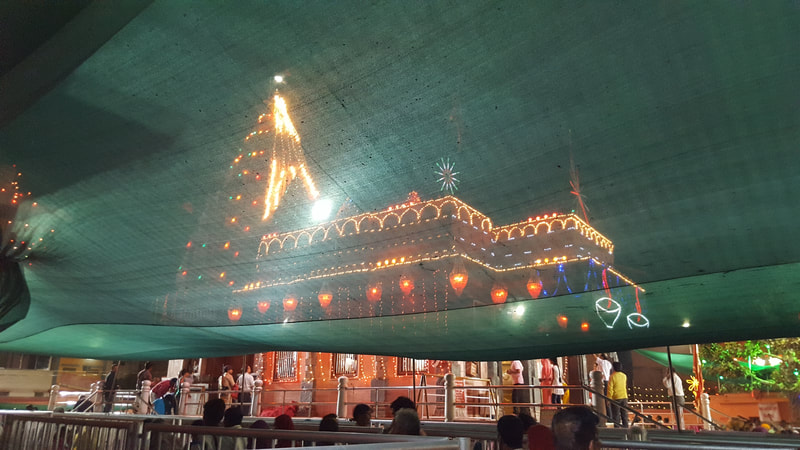




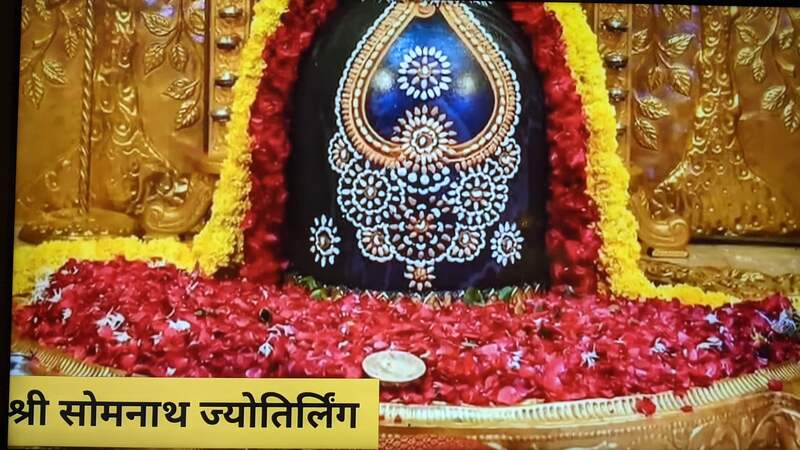



















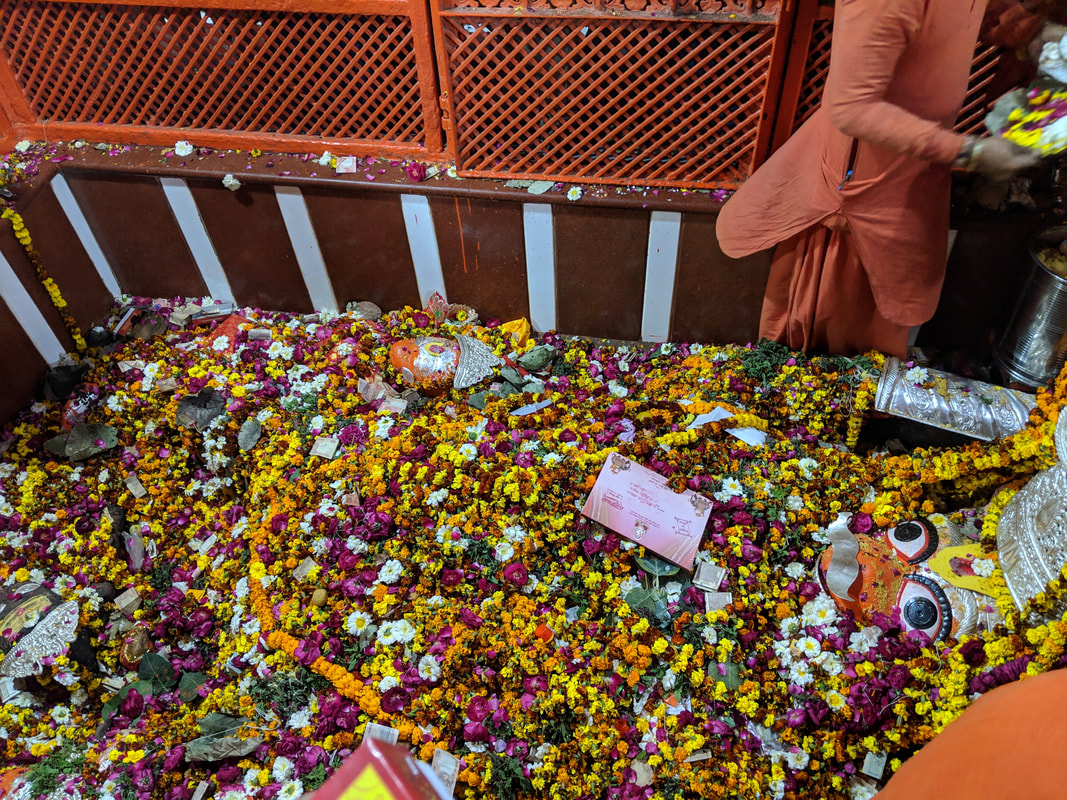






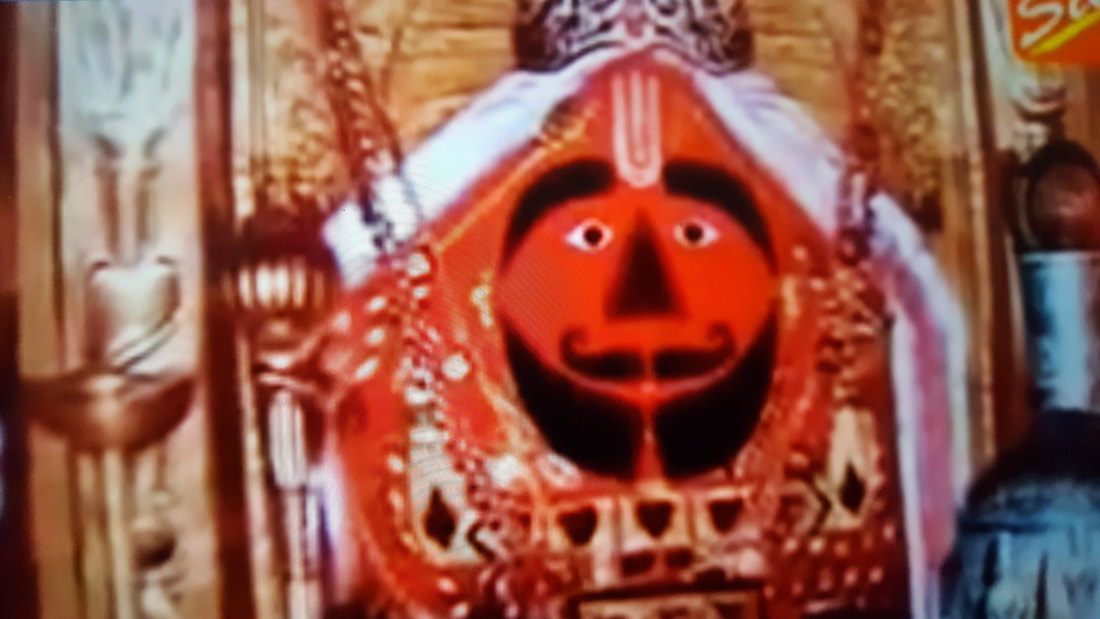





















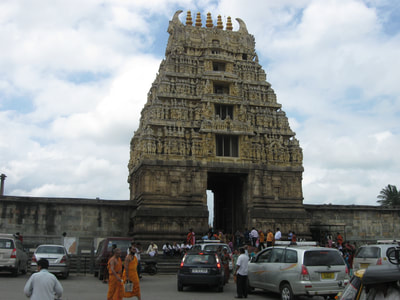



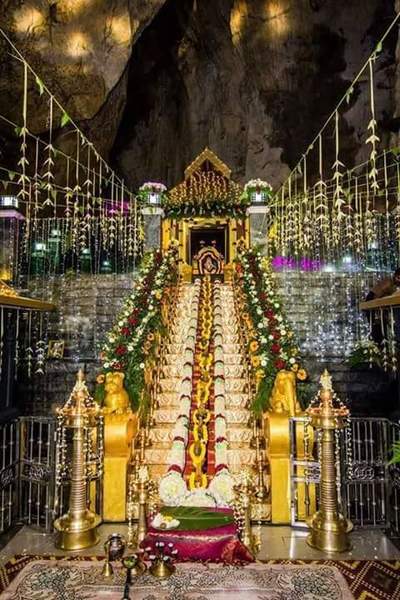












 RSS Feed
RSS Feed